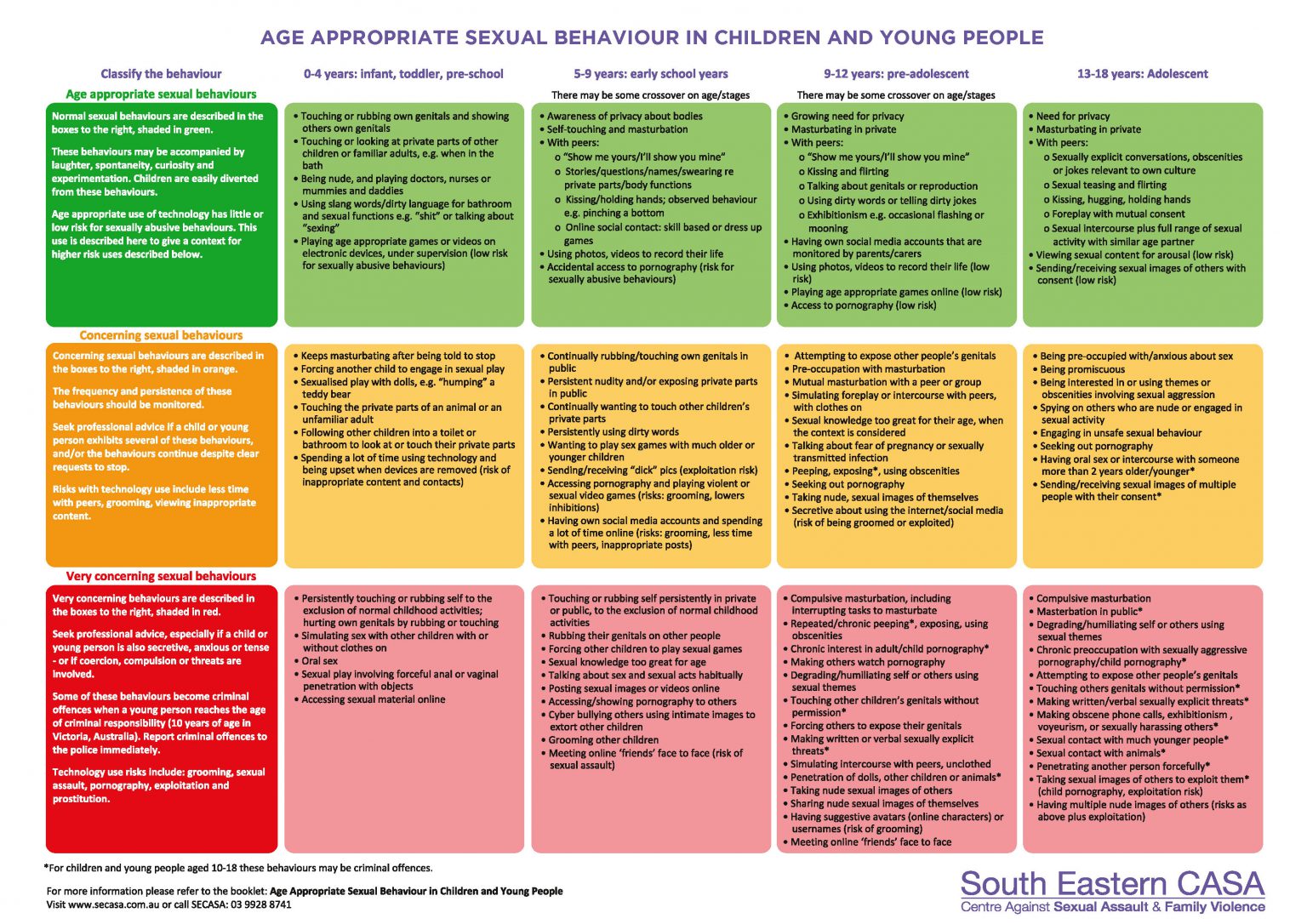Typical/Normal Sexual Development in Children
What Are Typical Sexual Behaviors in Children?
It’s normal for children to be curious about their own bodies and the bodies of others. Young kids often don’t have a sense of privacy or boundaries, so things like touching themselves in public or being curious about nudity can be expected at certain ages.
When we say these behaviors are “typical,” it means they are developmentally common—not that they should be ignored. It’s important for adults to guide children toward healthy boundaries in a calm and age-appropriate way.
While this curiosity is normal, certain behaviors—especially between children—can become concerning if they continue or escalate. Predators may also look for these moments as opportunities to take advantage. That’s why it’s important to address these behaviors early, set clear boundaries, and create a safe environment for children to learn about their bodies in a healthy and respectful way.
What Are Problematic Sexual Behaviors in Children?
Problematic sexual behaviors are actions that are not appropriate for a child’s age, don’t stop with simple guidance, and may be harmful to the child or others. While it’s normal for young children to be curious about bodies, this curiosity should be gently guided with age-appropriate conversations and resources.
If a child continues sexual behaviors even after being redirected, or if the behaviors seem intense, secretive, or distressing, it may be a sign that professional support is needed.
When sexual behavior happens between children, especially if there’s a noticeable age difference, it can be more serious. It becomes especially concerning if an older child uses pressure, force, or shows knowledge of sexual acts that’s far beyond what’s typical for their age, or if the behavior causes physical or emotional harm. These situations should be carefully addressed to protect everyone involved and ensure the right help is provided.

